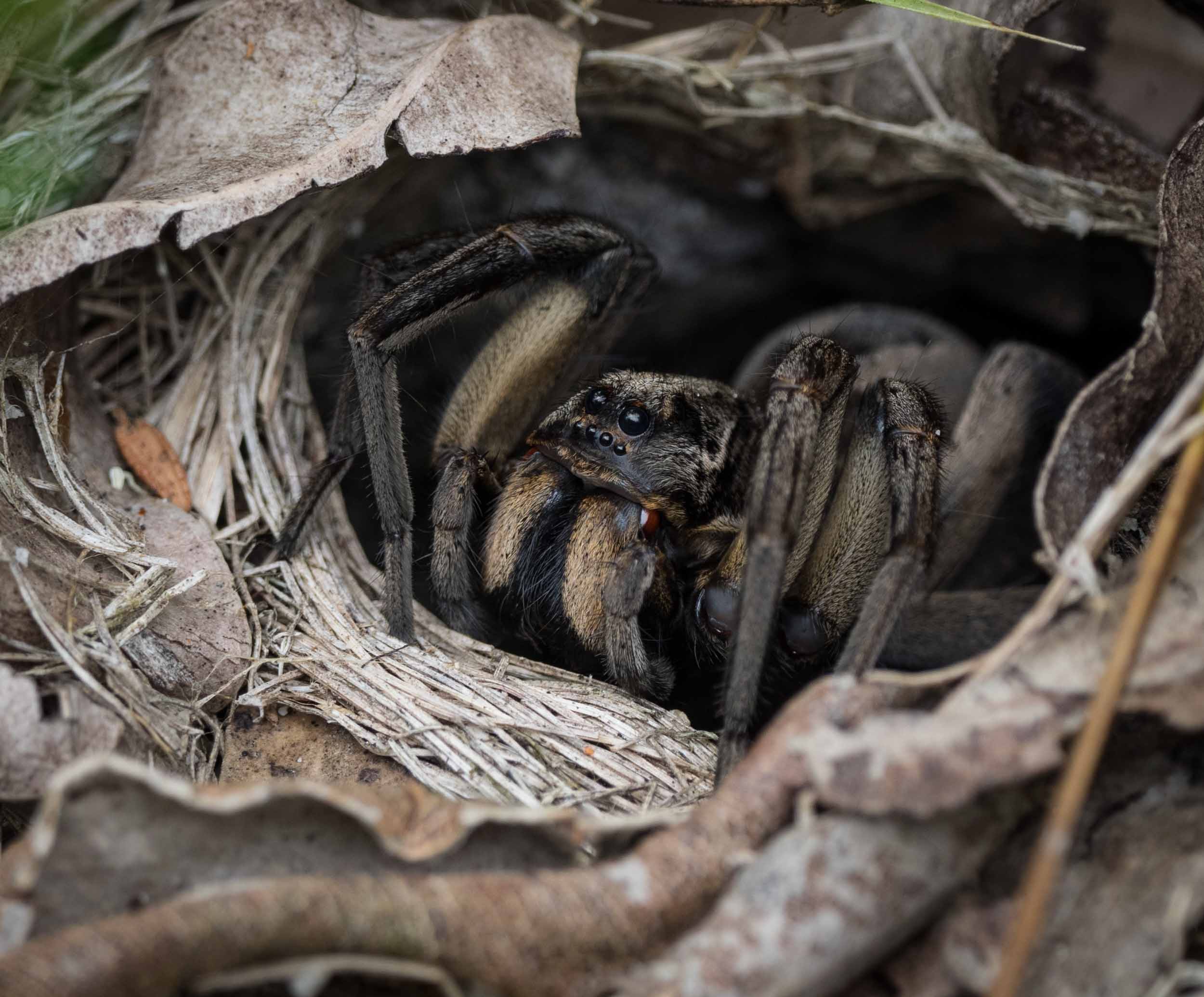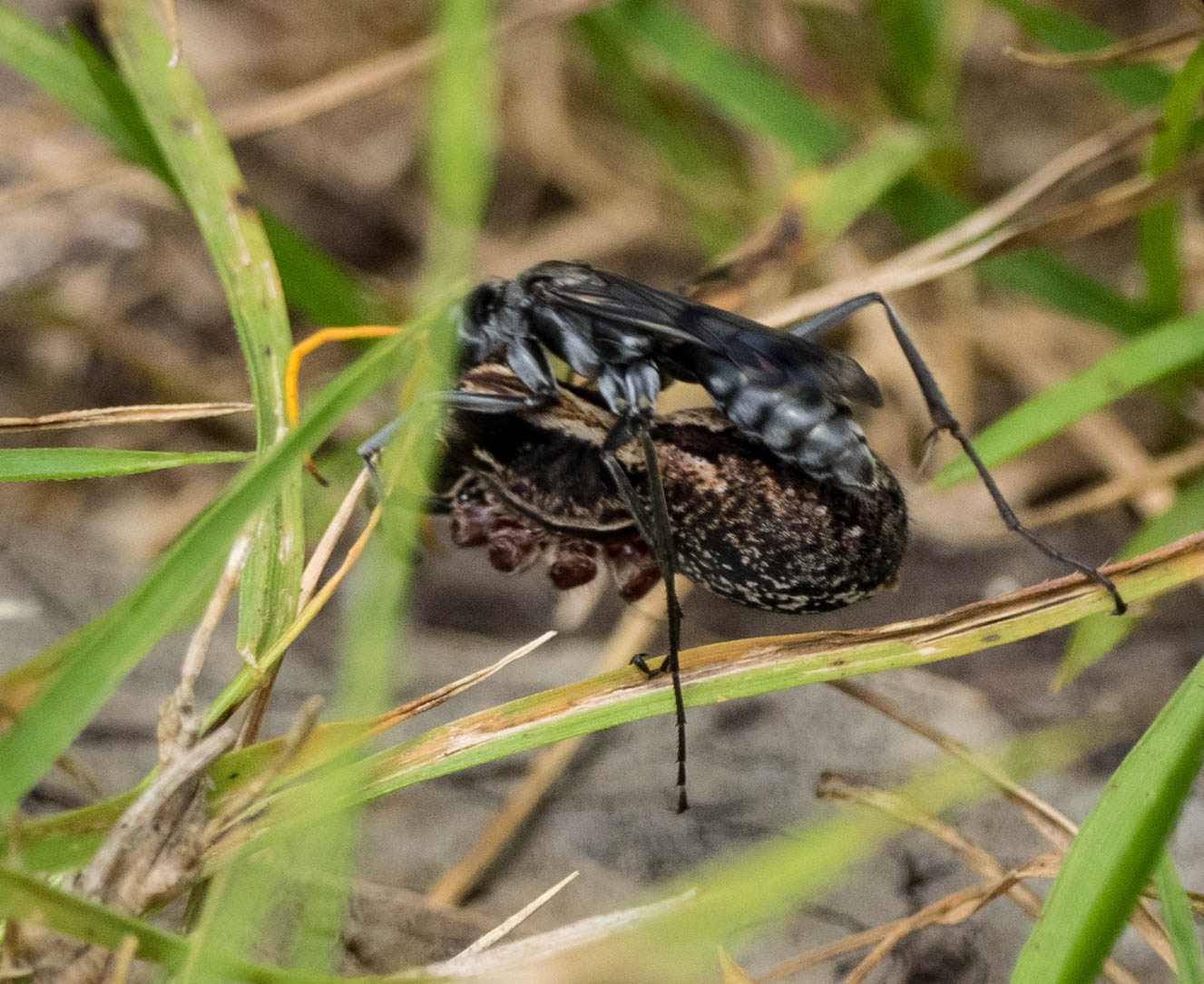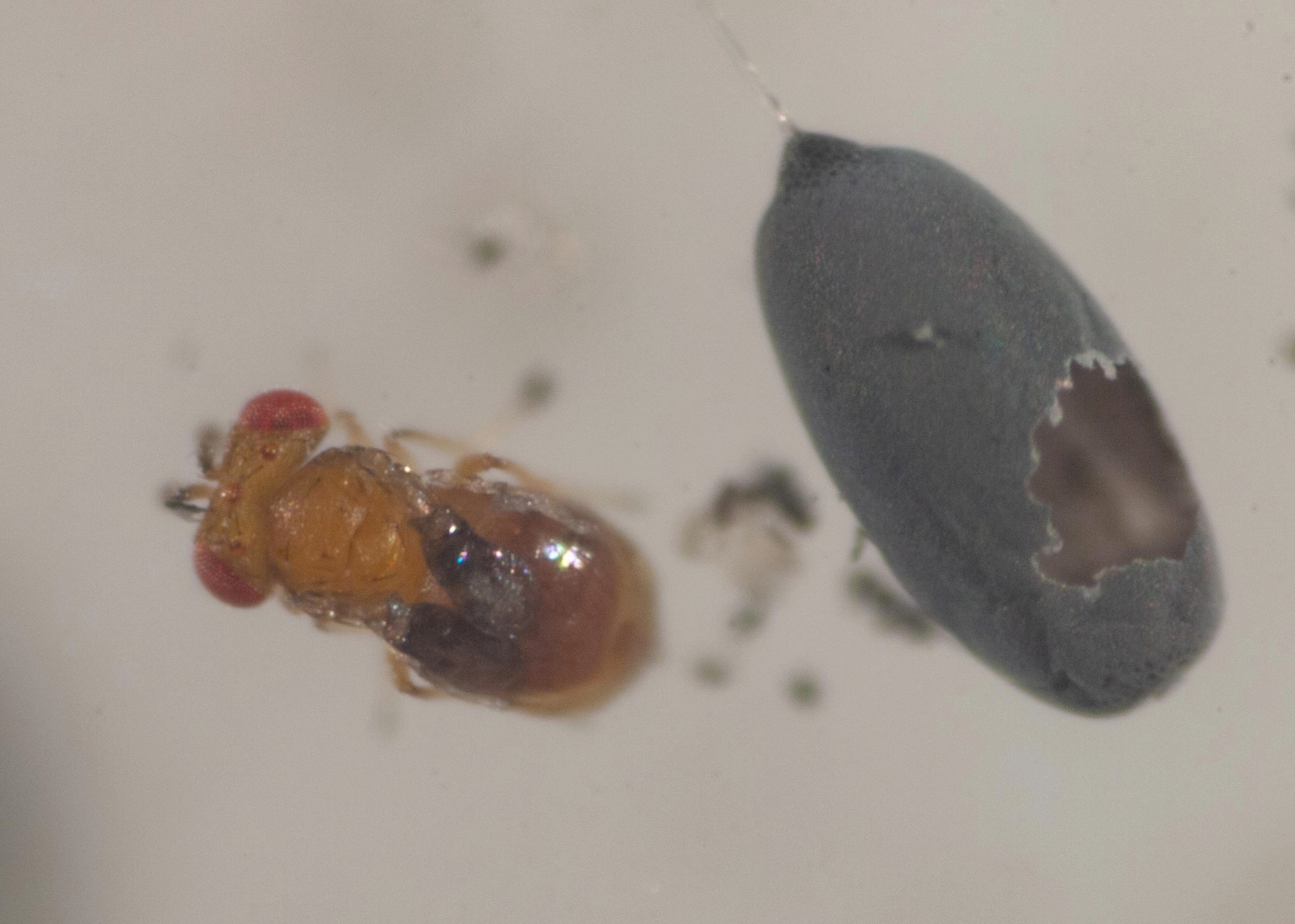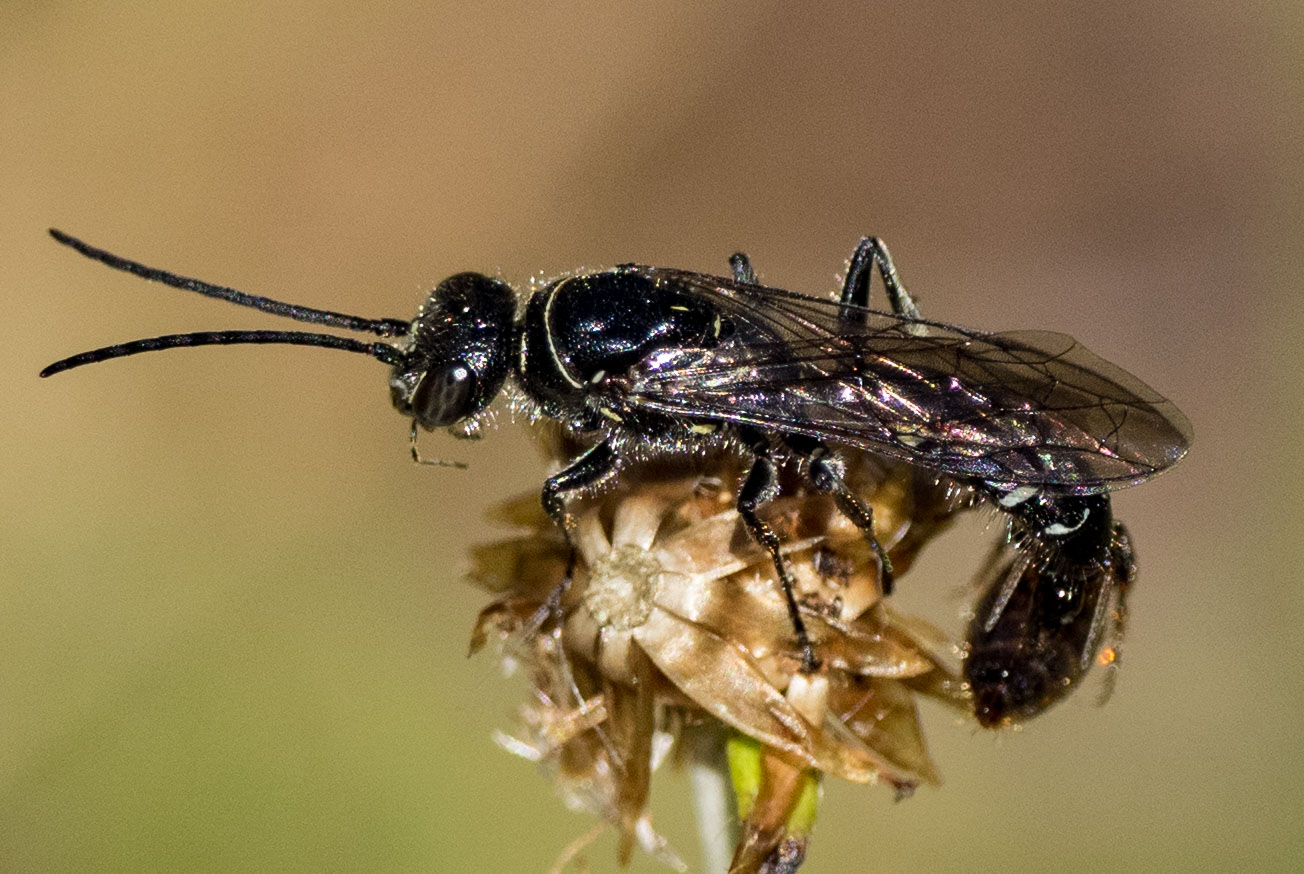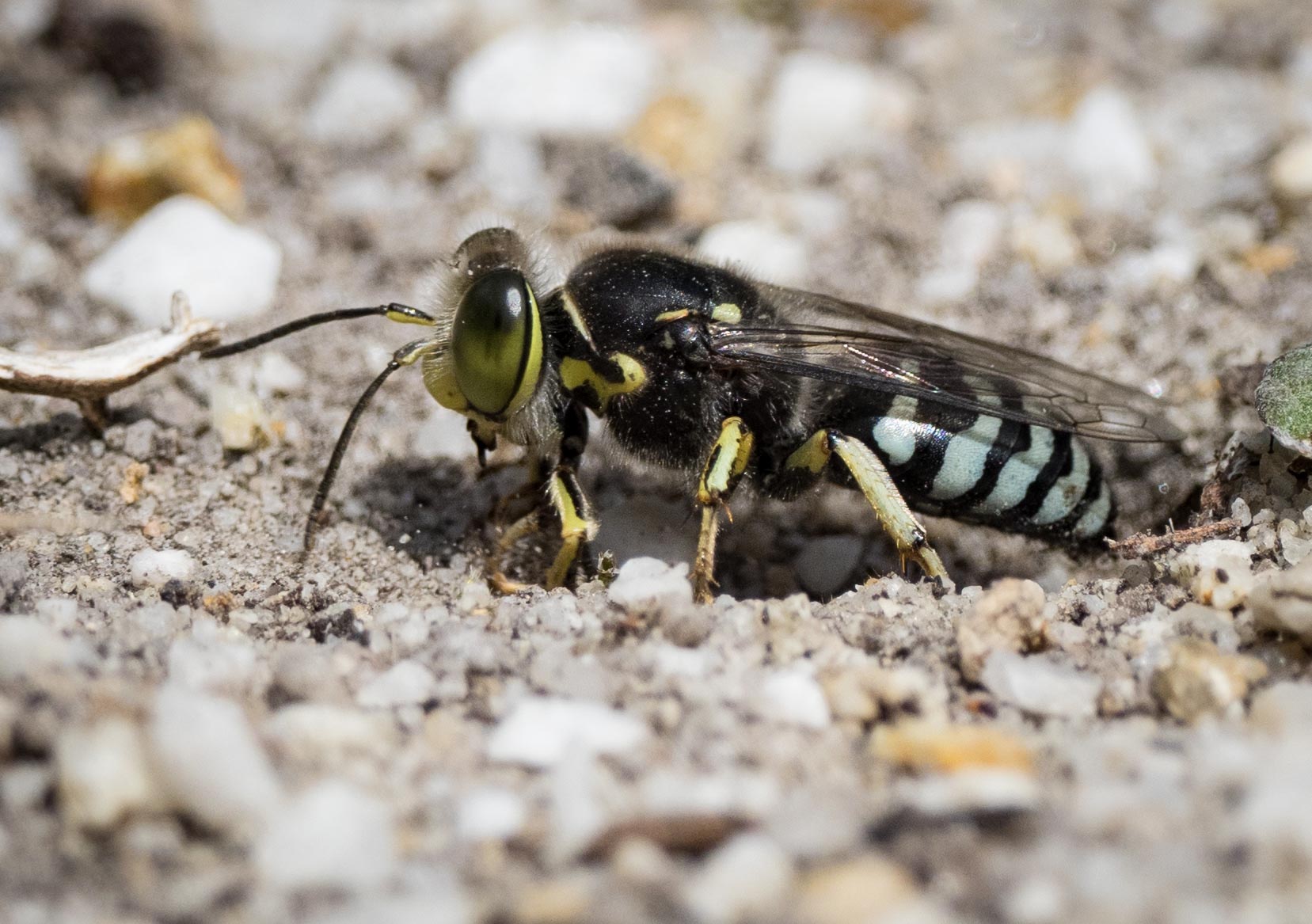Life below ground
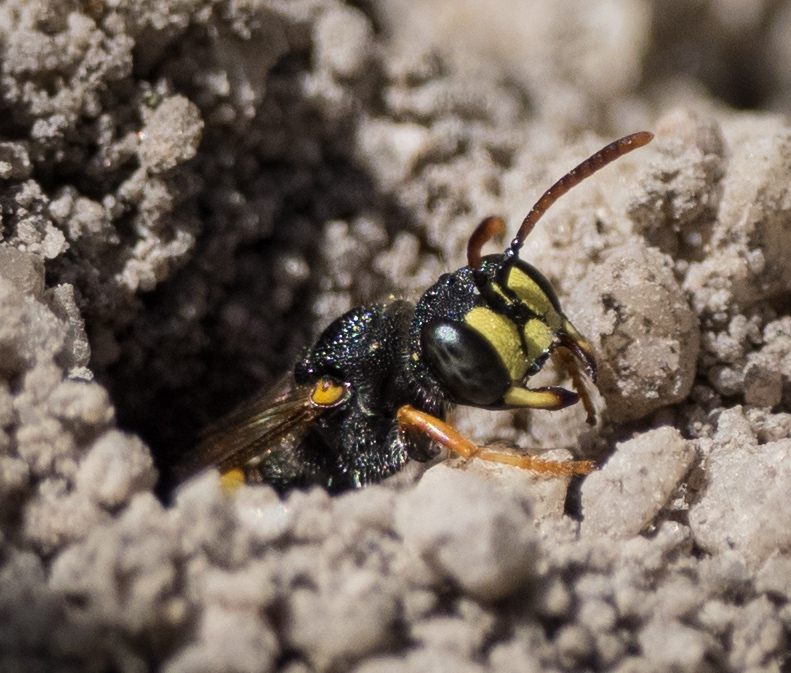
Pretty butterflies and showy dragonflies are not the only insects with interesting life histories. Some of the most extraordinary behaviours in the forest involve more secretive creatures and take place in dark nooks, crannies, and burrows.
The more time I spend watching life in the undergrowth, the more I'm struck by how much is taking place beneath my feet. Various species of spiders, bugs, wasps, bees, ants, and flies are breeding and nest building. Most of the adults disappear during Winter, but I'm reminded that they persist underground - mostly as eggs, larvae or pupae. And come Spring, it starts all over again.
(Throughout this post, click on any image to enlarge and read caption)
After watching a spider wasp at work this week, I decided it was time I learned more about ground-nesting wasps in general. Here's a little of what I've read, and some of what I've been seeing.
A spider wasp (Family: Pompilidae)
For over a week now I've been noticing this same wasp busying herself in a relatively small, grassy patch of ground.
How I know it's a female
Adult spider wasps are nectar feeders. So this large wolf spider is clearly not the wasp's lunch. Female spider wasps feed each of their larvae on a single, large, paralysed spider. So this is a female, carting her stunned prey off to her nest.
How I know it's the same insect
Her nest is underneath a fallen log. I've been watching her come and go from the exact same spot, by the exact same route, day after day.
Although I've only been witness to a single spider delivery, I have seen her very busily and repeatedly quarrying sand and ferrying it to the nest-log. This, and some reading I've done, leads me to believe she has numerous spiders stashed away by now.
I'd love to see the nest, but don't have the heart to interrupt her hard work. Instead, I've found a 1973 research paper describing wasps of this genus, nesting in the Canberra region. The following is based on their findings, and other published descriptions of the family.
She is a single parent. Spider wasps are solitary insects.
The nest will be a multi-celled tunnel or cavity. She may have dug a burrow in the soil, or taken over an existing burrow made by another insect - even another species. It is even possible that her nest is within a hollow in the log, rather than in the soil.
Each cell contains a single large spider and a single egg ... or larva. The spider needs to be a large one as it is the only meal the larva will get until after it pupates and emerges as an adult.
The spider isn't dead! Despite having most or all of its legs removed, the spider is not dead. The toxin has only paralysed it. The larva will feed on living tissue, leaving the vital organs until last to ensure the meal remains fresh. Gruesome! But then again, such a practice is rather common in the world of invertebrates. And it is, after all, exactly what spiders do to their own prey.
Sand wasps, Bembix (Family: Crabronidae; sub-family: Bembicinae)
The peak nesting activity of the sand wasps was weeks ago, but they are still around.
Like the spider wasp, sand wasp larvae develop in burrows. But otherwise they are quite different wasps:
Sand wasp females tend to nest communally. Although each female digs a burrow for each individual larva, females tend to nest close to the nests of other females.
Each larva is fed progressively. The mother delivers fresh food to her developing larva over the period of its development, only sealing the chamber once the larva is ready to pupate.
The larvae feed on flies. The adults are nectar feeders, but the females prey upon flies to feed their young.
For more about sand wasps, including more photos, see my earlier post: Sand Wasp season
Digger wasps, Cerceris (Family: Crabronidae; sub-family: Philanthinae)
I've been intrigued by these tiny wasps since first seeing them last week. Several wasps share a single burrow, and there seems to be a wasp on gate duty at all times.
So, what is known about these wasps?
They show some cooperative behaviour. Division of labour has been recorded for several Australian species.
The larvae are fed on adult beetles, and sometimes bees.
The nest is open. Unlike the sand wasps, which conceal the nest opening before flying off to feed or hunt, digger wasps leave the door open. But they do have a guard on duty!
The guard seems to be keeping a lookout, although I've yet to see any sign of aggression. They actually seem rather timid, peeking out of the entrance hesitantly, and backing down out of sight when disturbed.
I suspect the guard is keeping kleptoparasites at bay. There are apparently many species of flies and even wasps that lay their eggs on the prey gathered and stored by the digger wasps. This small fly sitting at the tunnel opening looked suspiciously like it was waiting to sneak in.
Friday 2nd Feb: update
This morning when I looked at the digger wasp nest I made two more discoveries:
1. They do close the door. Sometimes, at least, perhaps for overnight protection. Early today the opening was completely concealed with gravelly sand. And yet this afternoon it's wide open again.
2. They take out the rubbish. Well, they throw it out the front door anyway. This morning, as I was looking at the closed door, I noticed several tiny beetles. All dead. It seems that once the larvae have finished with the insides, the exoskeletons are hauled back out of the burrow - presumably making room for the next feed.
The closed door, with discarded insect carcasses. The shiny little beetle bodies are Cylindrical Leaf Beetles (Ditropidus sp. Family Chrysomelidae). They're just 2.5mm long.
Flower wasps (Family: Tiphiidae; sub-family: Thynninae)
Flower wasps are apparently quite common, and can be important pollinators. They are perhaps most easily recognised, however, when you see a mating pair. In many species, the female is small and wingless, and she remains attached to her winged mate for an extended time. He even feeds her, or flies her to flowers to feed.
Today I spotted a very small wasp, and then I noticed the even tinier female attached to the winged male. Definitely a flower wasp!
The mating pair we saw a week ago was a different species ... and much larger.
Flower wasps also prey upon beetles, but through a completely different strategy. Females burrow in search of beetle larvae, particularly scarab beetle larvae, and lay their eggs on the living grub within the soil.
Reference:
Evans, H.E. & Matthews, R.W. (1973) Behavioural observations on some Australian spider wasps (Hymenoptera: Pompilidae). Trans. R. Ent. Soc. Lond. 125 (1) pp 45-55.





